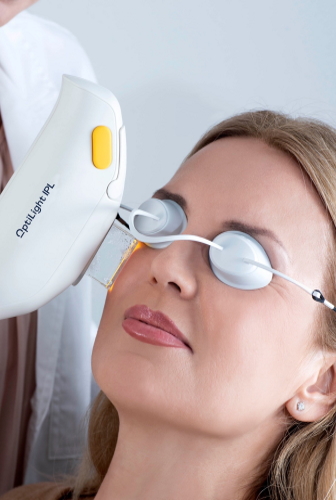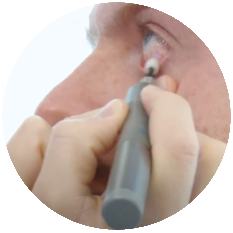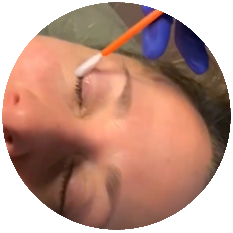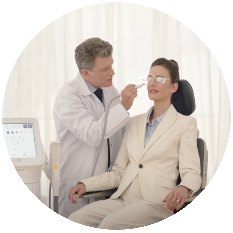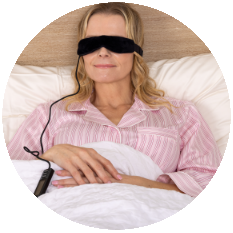Optilight IPL Treatment
What is Optilight IPL treatment?
Optilight is the latest brainchild of Lumenis, who created the first intense pulsed light (IPL) treatment. Although it is based on the general principles of IPL, it incorporates modifications especially designed for dry eye treatment making it very much more effective.
Light produced by the machine is channelled to a quartz block on the handpiece. This block is moved slowly over the skin and transfers the energy to the skin surface where it penetrates the targeted cells. It is a quick and painless procedure.
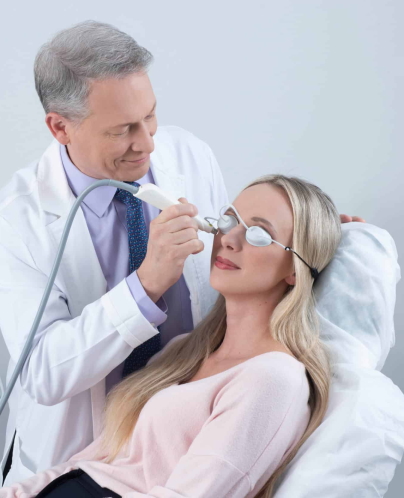
Why should I have this treatment?
Chronically dry eyes are not only uncomfortable; they also risk damage to corneas, and atrophy (wasting away) of the glands which produce the oil component of your tears. Treatment is essential.
Artificial tears, eye drops and other home treatments are time consuming and tend to offer only limited and short term relief. Optilight gives you long term relief by treating the underlying triggers of dry eyes/blepharitis, rather than the symptoms.
Although it is particularly effective where the underlying cause of dry eyes is Rosacea, it also treats several other causes, e.g. Demodex infestation, as well as meibomian gland dysfunction in general.
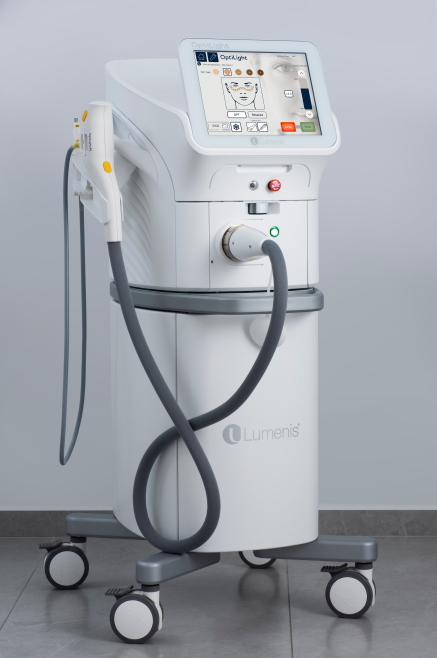
How does the treatment work?
IPL is a way of filtering out selected wavelengths of visible light that can be delivered as energy to specific types of cells, either in the skin or under the skin, without affecting the tissues around them. This is what makes it so well suited for hair removal and other aesthetic treatments.
Optilight IPL was originally created to treat facial rosacea, which is characterised by excessive superficial blood vessels (telangiectasia). Light energy is absorbed by these abnormal blood vessels and turned into heat, which then destroys them.
An incidental finding of an improvement in dry eye symptoms led to research for its use in dry eye patients.
Telangiectasia is one of the drivers of inflammation associated with meibomian gland dysfunction. Superficial blood vessels absorb and hold inflammatory agents, so the excess of these blood vessels means greater quantities of inflammatory agents are present. Removing the blood vessels minimises the levels of inflammatory agents and reduces the inflammation in the eyelids and meibomian glands.
This treatment also works by photobiomodulation. Photobiomodulation is a process whereby certain wavelengths of light create changes within cells which appears to stimulate tissue and may be anti-inflammatory, reducing inflammatory substances which aggravate dry eye.
Skin loses some of its strength and elasticity as we age. When this happens to eyelids, the lids may not close together properly anymore and incomplete blinks reduce the amount of meibum secreted. This treatment increases the production of collagen, improving the skin on your eyelids.
Optilight also destroys Demodex as the Demodex exoskeleton absorbs the light energy. High levels of Demodex are associated with increased bacteria on the eyelids, driving inflammation of the meibomian glands. By eradicating Demodex, this inflammation is reduced.
What are the success rates?
Exact statistics aren’t available yet due to this being a relatively new treatment mode. However, the clinical studies show marked improvements in patients treated with Optilight and anecdotal evidence is positive. With its multi-targeted approach, it is likely that the majority of patients will see an improvement in their symptoms.
Are there any risks or side effects?
Optilight is a safe treatment, but you will be given special glasses to wear during it to protect your eyes from the light.
Will I see a result immediately?
Most patients will notice an improvement within a few hours. However, for intense pulsed light to be effective, several sessions are needed. The usual protocol is four initial sessions, 2-4 weeks apart, followed by bi-annual maintenance sessions.
How long does the improvement in symptoms last?
Although the treatment provides long term relief, dry eye is a chronic disease, which is why it is recommended that you have two sessions a year to maintain your improvement.
Who will carry out my treatment?
At the Dry Eyes Clinic, your first session will be carried out by a consultant ophthalmologist. You will also have meibomian gland expression.
Can anyone have Optilight IPL treatment?
It is not recommended for anyone with the following:
- Eye or eyelid surgery within the last six months
- Neuro-paralysis within the last six months
- Uncontrolled eye disorders affecting the surface of the eye
- Skin cancer, pre-cancerous lesions or pigmented lesions
- Uncontrolled infections or uncontrolled immunosuppressive diseases
- History of cold sores or rashes around the mouth, including Herpes Simplex, Systemic Lupus Erythematosus and Porphyria
- Use of photosensitive medication within the last three months
- Recent or planned radiation therapy to the head or neck
- History of migraines, seizures or epilepsy
Optilight works best on light skin. If you have very dark skin, this treatment mode is unlikely to be effective.
The doctor will discuss your suitability with you at your consultation. If you are not a candidate for Optilight, you will be offered alternative treatment.

